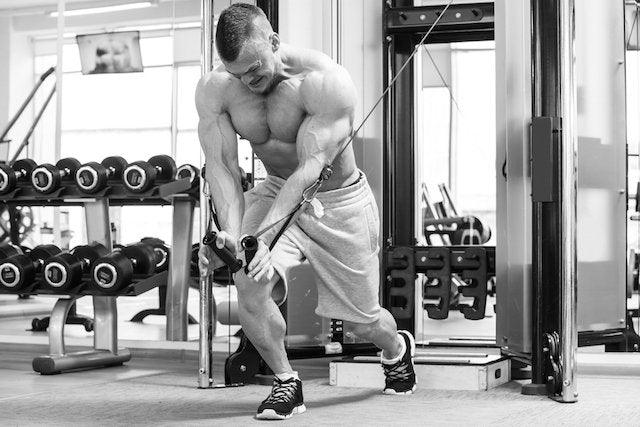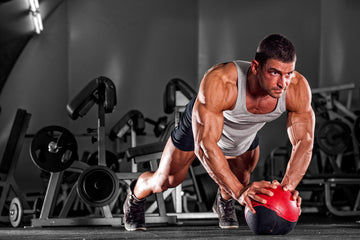

The Good and Bad Pain for Muscle Mass
Table of Contents
THE GOOD AND THE BAD PAIN
For Muscle Mass what you need to Know, Train Smart, and Grow
By: Joe Palumbo, IFBB Professional Bodybuilder
There is a difference between normal soreness, “Good Pain”, which is your body telling you… great work out! And there is the “bad” pain and unfortunately most are injury related. With the old expression: “No Pain, No Gain,” it is not always a great rule to follow. As lifters and athletes, getting sore is something we’ve learned to love because we associate soreness with a productive workout. Many in the professional fitness community confess they wish they knew the difference earlier.
That burn you feel 24 to 48 hours after an intense workout is called delayed onset muscle soreness (DOMS)- DOMS can occur anywhere in the body that has recently been exposed to unfamiliar or intense physical activity. There is a long-held belief that DOMS is a necessary precursor to muscle remodeling. The exact mechanisms are not well understood” the paper by Schoenfeld and Contreras explained, “DOMS” appears to be a product of inflammation caused by microscopic tears in the connective tissue elements that sensitize nociceptors – (nociceptor is a sensory nerve cell that responds to damaging or potentially damaging stimuli by sending signals to the spinal cord and brain) and thereby heighten the sensations of pain.
It’s not a good workout unless you get DOMS, this is an MYTH, It doesn’t mean that you’re not getting a good workout because you’re not crippled the next day. Studies have shown that soreness itself (using a scale from 0 to 10 to assess the level of soreness) is poorly correlated as an indicator of muscle adaptation and growth. Many factors influence how DOMS presents itself in individuals. Extreme muscle soreness can be counterproductive. Relentless soreness can significantly decrease force-producing capacity, which will be unfavorable to performance in following workouts. For many, motivation levels can take a hit when you’re hindered by crippling muscle soreness. Some to the point of no return….
There are two main, essential components necessary for the growth of muscles, stimulation, and repair. Each time that a muscle is exercised, contraction occur causing damage to the internal muscle fibers. The muscle fiber repair occurs after the workout while the muscles are in resting mode. This is where the muscle growth occurs. More fibers are produced, more muscle growth takes place.
The most intense workouts produce the most soreness and exercise intensity seems to correlate with strength and mass gains. There has never been research which proves these types of muscle damage cause muscle growth. In fact, many people have gotten stronger and bigger without ever getting sore. Many top athletes train without any desire to experience muscle soreness as it impedes their ability to perform. So no, you don’t need to experience muscle soreness after a training session to build muscle, and you probably shouldn’t rely on it as an accurate indicator of productiveness. Take your workouts seriously. Pay attention to your muscles. Balance your training styles. Give your joints and muscles programmed rest periods and recovery time—and you will keep growing. Smart training is the path to good health.
Keep in mind; exercise is supposed to:
Add to your life: make your life better, more vital, and happier.
Improve your focus and productivity.
Make you stronger.
Give you the high feeling after each workout.
STAY SAFE, TRAIN SAFE, TRAIN SMART.
Joe Palumbo
IFBB Professional Bodybuilder
Director of Physical Performance Infinite Labs Orlando FL
Certified Trainer
Advance Sports Nutrition Specialist (ASNS)
Certified Navy Seal Fitness Instructor
Freelance writer: Workouts and Training Techniques, Strength Training and Conditioning, General Fitness, Weight Loss and Nutritional Needs
References:
1. Brad J. Schoenfeld and Bret Contreras, “Is Postexercise Muscle Soreness a Valid Indicator of Muscular Adaptations?” Strength and Conditioning Journal, vol. 35 No. 5 pp. 16-21 (2013)
2. Brad J. Schoenfeld “The Mechanisms for Muscle Hypertrophy, and Their Application to Resistance Training” Journal of Strength and Conditioning Research, vol. 24(10) (2010)
MUSCLE MEDIA MAGAZINE FOR MEN
The premier source of training, nutrition, supplements, fat loss and health for men.

















